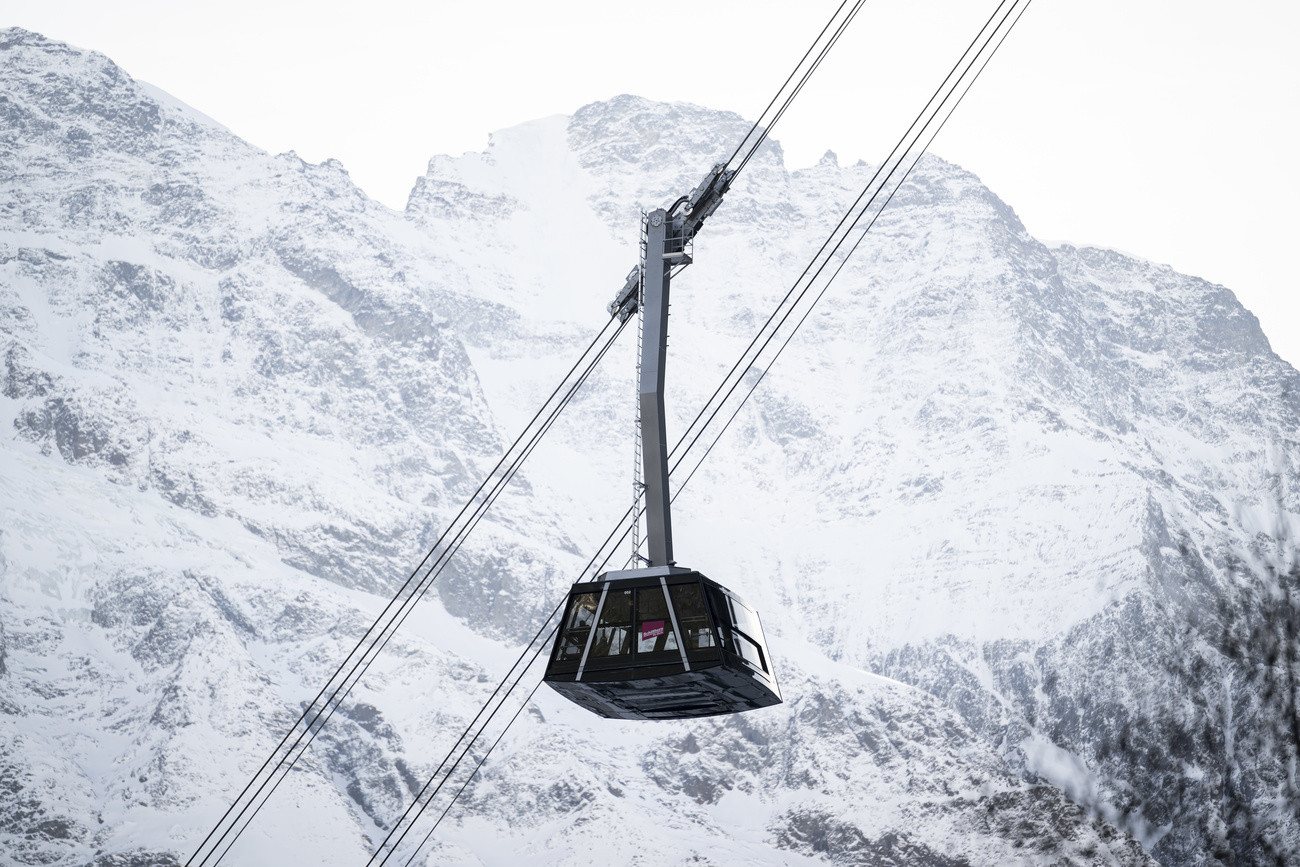Rail chaos raises fundamental questions

The power outage that led to a complete collapse of the much-vaunted Swiss railway system has sparked a major debate about what went wrong and why.
The Swiss Federal Railways said the unprecedented nationwide standstill on Wednesday was due in part to structural weaknesses in its power supply system.
Rail operators in several other European countries are now adding to the public outcry by suggesting that, while a similar incident could hit their own networks, it would almost certainly not affect the whole country.
Kevin Groves, head of media relations at British infrastructure operator Network Rail, said power for electrified rail routes in Britain came from “multiple suppliers” using “multiple distribution systems and networks”.
Groves told swissinfo: “These routes all have back-up power suppliers, and regarding power to other systems [i.e. to signalling systems on non-electrified routes] there are back-up generators in case of mains power disruption.
“Thus our entire network could not be shut down by any power failure. If mains and back-ups failed at the same time, the effects would be very regionalised.”
Domino effect
A spokesman for German rail operator Deutsche Bahn also said a comparable collapse was “hardly possible”.
He added that the company had a “decentralised structure” of power suppliers, with 55 separate power plants responsible for keeping German trains in motion.
A leading expert at Lausanne’s Federal Institute of Technology echoed that view. “What is astonishing is that the whole system is knocked out, not just one or several regions. I don’t understand how that can happen.”
Professor Matthias Finger, who specialises in the management of infrastructure industries, told swissinfo that the Swiss system of dedicated power supplies for the nationwide railway network was “fairly typical” of European countries.
However, he and other observers point out that what is unusual in Switzerland is the “domino-like” way that a technical problem in one particular region can rapidly spread to affect the whole country.
The Swiss also have to put up with the fact that their railway power system is not compatible with European standards for mains electricity.
Splendid isolation
The Swiss railway system developed its own nationwide power system independently over a number of decades following the First World War.
Professor Ulrich Weidmann, who specialises in traffic and transport management systems at the Federal Institute of Technology in Zurich, says this separate system was developed largely for historical reasons.
He told swissinfo: “Switzerland is one of five European countries – along with Germany, Austria, Norway and Sweden – that developed a separate power system for its railways, for technical reasons that are no longer [relevant].
“The result is that it is now too expensive to change the existing system, but Switzerland finds itself rather isolated at the southern end of a system that is incompatible with [most of its neighbours].”
While other countries, including France and Britain, are able to supply power to their railway systems at a frequency of 50 Hertz – the standard for European mains electricity – the five “pioneers” of the railway age all have to transform it to a frequency of just 16 2/3 Hertz.
The Swiss Federal Railways therefore draws its supplies primarily from a total of ten independently-operated power plants, which supply power for trains nationwide via 1,800 kilometres of transmission cable.
Redundant rings
Weidmann said the other major problem affecting the Swiss system was the fact that the system was shaped more like a “star” than like a “ring” – in other words, there is often no possibility of power supplies being rerouted in the event of a breakdown.
Hansjörg Hess, head of infrastructure at the Federal Railways, made the same point, saying the company was aware of the system’s “structural weakness” and had been trying for a long time to find solutions.
However, he said that this sort of infrastructure development was both costly and time-consuming – often a matter of years, if not decades.
Weidmann added that a major reason for the lack of action was objections – by private citizens rather than environmentalist groups – to plans for additional transmission cables, particularly across the Alps.
A plan to build a link over the Gemmi alpine pass foundered in the 1980s and there has been resistance to plans for new links across the Nufenen pass and between Kerzers and Yverdon in western Switzerland.
Said Weidmann: “The frequency issue is a major inconvenience that has been much discussed, but it would be simply too expensive to upgrade to the European standard today.
“The structural issue is more possible to address, although some obstacles do have to be overcome. But this is something the Swiss have to do on their own.”
swissinfo, Chris Lewis
The blackout began with a short circuit on a power line in central Switzerland.
With no back-up lines available because of construction work, all current generated by the company’s power stations north of the Gotthard Pass was diverted south to Ticino.
This in turn led to local grid overload and the automatic shutdown of the power stations.
Following the unprecedented network collapse, the Swiss are in the first stages of a technical – and political – post-mortem.
Foreign rail operators have fanned the flames by suggesting a comparable disaster could not happen there.
The debate is likely to revive the historical conflict between federal railways planners and environmentalists.

In compliance with the JTI standards
More: SWI swissinfo.ch certified by the Journalism Trust Initiative










You can find an overview of ongoing debates with our journalists here . Please join us!
If you want to start a conversation about a topic raised in this article or want to report factual errors, email us at english@swissinfo.ch.